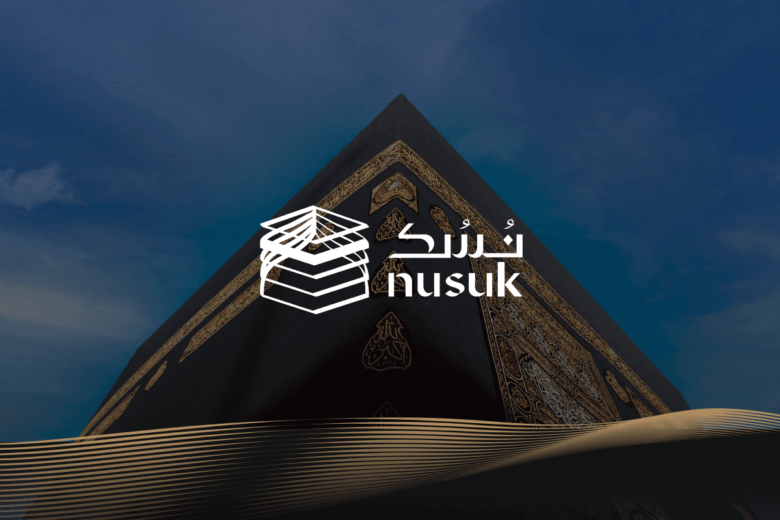Have you ever dreamed of standing in one of the holiest places on earth, where every prayer feels like it touches the heavens? For millions of Muslims, visiting Madinah brings that dream to life, and the experience becomes even more profound inside a sacred space within the Prophet’s ﷺ Mosque. But how can you make sure you’re able to enter this blessed place during your Umrah or Hajj journey? The answer lies in securing a Rawdah permit, a requirement that every pilgrim must fulfill before stepping inside.
In this guide, you will explain everything about the Nusuk Rawdah permit, from booking times and entry rules to practical tips that will help you plan a smooth and spiritually uplifting visit.
What is Rawdah?
The Rawdah, often referred to as Riyad ul Jannah or “Garden of Paradise,” is a blessed area within the Prophet’s ﷺ Mosque in Madinah. It is situated between his noble home and the pulpit where he used to deliver sermons. Though the space is physically small, it carries extraordinary spiritual significance. Muslims around the world long to offer salah and supplications here, as the Rawdah is regarded as one of the most honored places to worship. Due to its limited size and the large number of visitors, entry is only possible with official permission to ensure fairness and order.
Why Rawdah (Riyad al Jannah) is Important for muslims?
It’s located between the Prophet’s home and his pulpit; this blessed spot is cherished by Muslims across the world. Pilgrims consider praying here a once-in-a-lifetime opportunity, as it is believed to bring immense blessings, acceptance of supplications, and a deep sense of peace.
The Prophet ﷺ highlighted its importance when he said:
“What is between my house and my pulpit is a garden from the gardens of Paradise.”
(Sahih al-Bukhari, Hadith 1195; Sahih Muslim, Hadith 1390)
For believers, stepping into Rawdah feels like entering a glimpse of Paradise on earth, a spiritual gift that makes the journey to Madinah unforgettable.

Is a Permit Required to Enter in Rawdah?
Yes, it needs a permit to go to Al-Rawdah, Al-Sharifah, and make the prayer inside it. Rawdah is a part of the Prophet’s Mosque and, unlike the rest of the Mosque, the Rawdah is small and therefore highly demanded. The Nusuk Rawdah permit system is used to control access in order to be fair and not disrespectful. The permit system plays an important role in:
- Managing large crowds of pilgrims who long to visit this blessed spot.
- Creating a smooth and safe experience by preventing overcrowding.
- Preserving the sanctity of the area so every visitor has time to pray peacefully.
Special considerations exist for elderly or disabled pilgrims, who are given designated access routes and assistance. However, even in these cases, a permit is still required.
Who to Get the Rawdah Permit?
Only certain people can apply to be issued the Rawdah entry permit in order to maintain order and control the crowds. Pilgrims either have to belong to one of the following categories:
- Hajj or Umrah visa holders who are visiting specifically for pilgrimage.
- Residents of Saudi Arabia with a valid and active iqama.
- Tourists with a registered visa linked to the Rawdah permit app.
Otherwise, and unless one of these conditions is met, no permit will be possible to obtain. The system enables equitable access to anyone intending to become a pilgrim and also makes the process simple and manageable.
How to Get Rawdah Permit
The Rawdah permit system is now streamlined through the Nusuk app, the official platform provided by Saudi authorities. Pilgrims can log in, choose a time slot, and receive a digital permit. It’s worth noting that while travel agencies may assist by guiding pilgrims on how to book, they cannot directly issue Rawdah permits themselves. Always rely on the Nusuk app for authenticity.
For a step-by-step guide on using the Nusuk app to book your Rawdah permit, check out our detailed guide here.
Common Mistakes to Avoid in Rawdah
Being in Rawdah is a bottom-line opportunity, but most pilgrims do not understand that they commit grievous mistakes that are offensive to others. Here are some to avoid:
- Don’t push or rush others – Maintain patience. Everyone has a chance to pray.
- Avoid blocking space for too long – Offer your prayer and move so others can also get a chance.
- Keep your voice low – High-tempo discussions or reading aloud will distract worshipers
- Don’t take endless photos or videos – Concentrate on the worship rather than having too many cameras in the place.
- Respect women’s and men’s timings – Entering should be orderly; pay attention to the instructions of the moose staff.
Not making these mistakes will not only make your experience smoother but also facilitate other pilgrims to worship in peace.
Timing and Best Practices
Timing to enter the Rawdah is a key point that is essential in making your experience great. The place becomes busy as soon as it is crowded, and most especially during prayer times. Morning and Afternoon hours are normally taken to be the most serene hours to visit; any time before seven in the evening is advised. Fridays and peak seasons during Hajj or Ramadan are generally the busiest, and so one should keep that in mind.
Duration of Stay in Rawdah
Once you enter the Rawdah, the stay is usually limited to 10–15 minutes per person due to the high number of pilgrims. Security staff ensure a smooth flow so that everyone gets a chance to pray. It is best to focus on offering two rakaat of prayer (Tahiyyat al-Masjid), make a few heartfelt duas, and then leave calmly for others to benefit.
Rawdah Entry Gates and Routes
Knowing which gate to use for Rawdah can save you time and make your visit smoother. Since Al-Masjid an-Nabawi is vast, authorities have designated specific gates that lead directly toward the Rawdah area.
For Men: Pilgrims are usually directed through Gate 37 (Bab al-Salam) or nearby gates, depending on crowd flow. Security staff and signs will guide you toward the correct entry route once your permit is scanned.
For Women: Women are generally assigned Gate 25 (Bab Uthman ibn Affan) during their allocated visiting hours. Mosque staff are available to assist and ensure a smooth entry.
It is important to add that the assignments on gates can be slightly different in regards to crowd management, the prayer schedule, and seasonal changes (especially during Ramadan and Hajj).
Preparation Tips Before Visiting Rawdah
Going to the Rawdah requires not only spiritual readiness but also some practical preparation.
- Carry essentials only: You only need a small prayer mat, your ID, and a bottle of water. Work with small bags as they might not be allowed into the place.
- Health precautions: Old pilgrims or those with any health impairments are advised to rest before and, if possible, use mobility aids. It is, however, important to drink plenty of water too.
- First-time visitors: Look at the signs describing crowd management, follow Mosque personnel, and be calm. It is a highly emotional experience, so appropriate preparation will facilitate the process.
Rules and Regulations Inside Rawdah
Respect and modesty are at the heart of the Rawdah experience.
Dress code: Men and women must dress modestly so as not to see or reveal bodies. Women should make sure their headscarf is insured.
Etiquette: Speak in a low tone and do not push people, and respect other people who are reciting their prayers.
Allowed items: Tiny prayer rugs or tasbeeh in hand, and even own copies of the Quran are acceptable. Any food, big bags, and sharp items are strictly not allowed.·
Photography and phones: Although mobile phones are not prohibited, it is not allowed to have loud conversations or take too many pictures with a phone. The emphasis must be put on prayers and contemplation.
Conclusion
Travelling to the Rawdah is a holy and rare grace; the Prophet ﷺ called it a garden among the gardens of Paradise. By having the appropriate preparation, i.e., obtaining your Nusuk permit, observing mosque guidelines, and timing it properly, you are free to concentrate on your prayer and reflection. Keep off the ground, be aware of other people, and be humble in order to visit the place so that you stay therein as a matter of peace and spiritual satisfaction. If you’re booking your Umrah package in the USA, Majmua provides expert guidance on Rawdah permits
FAQs:
1. Can travel agencies provide Rawdah permits?
No, only the official Nusuk app issues Rawdah permits, not travel agencies.
2. How many times can I visit Rawdah with a permit?
You can visit once per permit. Reapplication is allowed after a few weeks, based on availability and regulations.
3. What happens if I go to Rawdah without a permit?
You won’t be allowed in without a valid permit, as security checks all entries to manage crowds.
4. Is the Rawdah permit free of cost?
The permit is free only through the Nusuk app. Beware of people charging anything because this is not legitimate.
5. Can women apply for a Rawdah permit?
Yes, women can apply via the Nusuk app and have separate visiting hours.


